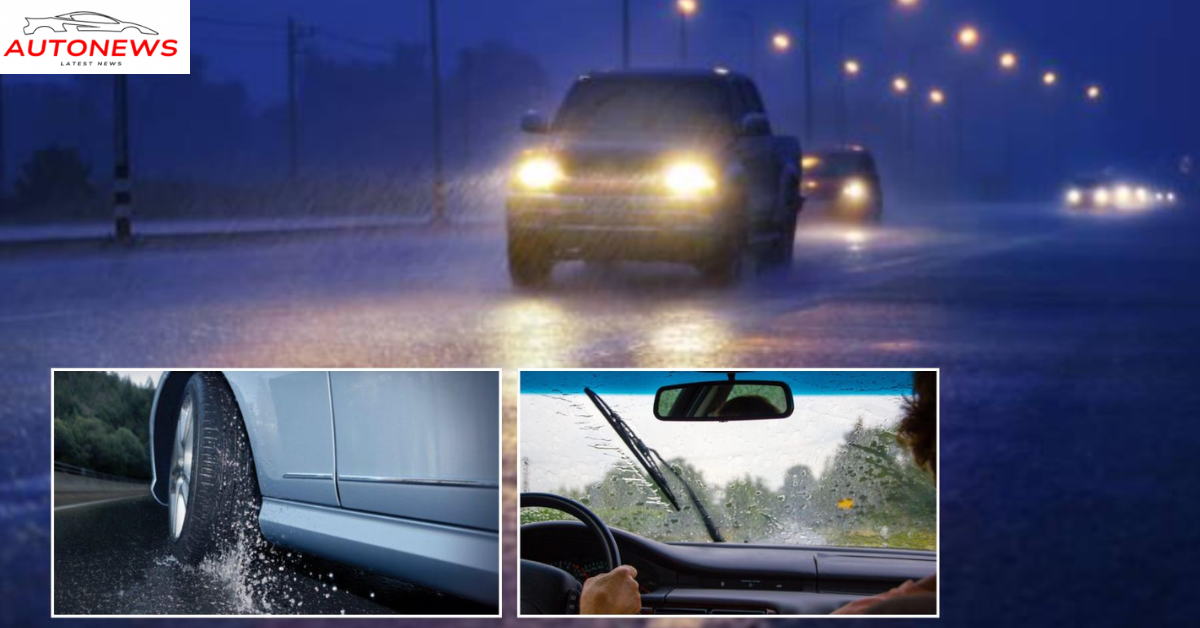The monsoon season brings much-needed relief from scorching summer temperatures, but it also presents a unique set of challenges for drivers. Slick roads, poor visibility, waterlogging, and unpredictable traffic patterns can turn even short commutes into potential hazards. Whether you’re a seasoned driver or a beginner, adapting your driving habits for rainy conditions is crucial to ensure your safety and that of others on the road.
Here are essential car driving tips to help you navigate the monsoon season with confidence and care:
1. Prep Your Car Before Hitting the Road
Before you drive in the rain, ensure your car is in peak condition. Monsoon-specific maintenance includes:
- Check your tyres: Make sure the treads are deep enough to offer good grip. Bald or worn-out tyres significantly increase the risk of skidding on wet roads.
- Inspect wipers and washers: Your windshield wipers should clear water efficiently without leaving streaks. Refill windshield washer fluid and replace old wiper blades if needed.
- Test brakes: Brakes must be responsive. If you hear unusual noises or feel vibrations when braking, have them checked immediately.
- Seal leaks: Ensure that your car’s door and window seals are intact to prevent water seepage into the cabin.
- Check lights: Visibility is key during heavy rains. Headlights, brake lights, and fog lamps should be clean and functional.
2. Slow Down and Maintain a Safe Distance
Speeding on wet roads is a recipe for disaster. Reduce your speed to improve traction and reaction time. Also, increase the distance between you and the car in front of you—at least twice the usual space. Wet roads can double your stopping distance, and sudden braking may cause your car to skid or hydroplane.
3. Avoid Sudden Movements
Smooth and deliberate driving is essential in rainy conditions. Avoid sudden acceleration, harsh braking, or sharp steering. These abrupt maneuvers can cause loss of control, especially when roads are slick with water, oil, or mud.
4. Be Cautious of Waterlogged Roads
Driving through standing water can be tricky and dangerous:
- Gauge the depth before entering a waterlogged stretch. If the water level is above the car’s bumper or halfway up the wheels, turn around and take another route.
- Drive slowly in first gear to avoid splashing water into the engine bay or stalling.
- Keep engine revs high by using a lower gear. This helps prevent water from entering the exhaust system.
- After exiting a waterlogged area, tap your brakes gently to help dry the brake pads.
5. Use Headlights, Not Hazards
Many drivers switch on hazard lights while driving in heavy rain. This is incorrect and can confuse other drivers. Use low-beam headlights or fog lights instead. Hazard lights should be used only when your vehicle is stationary and poses a hazard to others.
6. Watch Out for Slippery Surfaces
During the first few rains, roads become extremely slippery due to the oil, grease, and debris that accumulate on dry surfaces. Be extra careful during this time. Painted road markings, metal manhole covers, and leaves become especially slick when wet—avoid them if you can.
7. Plan Your Route Wisely
Stay informed about weather forecasts and traffic updates before you travel. Use GPS and traffic apps to find safer, less congested routes. Avoid underpasses, low-lying areas, or roads known to flood easily.
8. Keep an Emergency Kit in Your Car
During the monsoon, unexpected breakdowns or delays are more common. Keep a well-stocked emergency kit that includes:
- Flashlight with extra batteries
- Umbrella or raincoat
- First aid supplies
- Mobile charger or power bank
- Basic tools and jumper cables
- Tow rope and tyre inflator
- Drinking water and non-perishable snacks
9. Stay Calm in Case of Hydroplaning
Hydroplaning occurs when your tyres lose contact with the road due to a layer of water. If this happens:
- Do not brake or turn suddenly.
- Ease off the accelerator gently.
- Keep the steering wheel steady until the tyres regain grip.
10. Consider Skipping the Drive
If conditions are severe—like heavy flooding, poor visibility, or strong winds—it’s safer to postpone your trip. No destination is worth risking your life or vehicle.
Final Thoughts
Driving in the monsoon is not just about skill—it’s about awareness, preparation, and patience. By keeping your car well-maintained and adjusting your driving habits, you can drastically reduce your risk of accidents and breakdowns. The rain may be romantic and refreshing, but it commands respect on the road.
Drive safe, stay dry, and let the monsoon season be a time of joy, not jeopardy.

